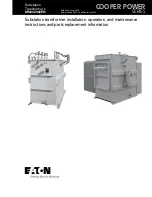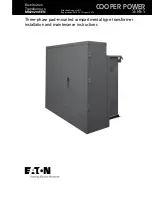
19
G U
Montage und Inbetriebnahme
General information on air quality
The service life of the sensor depends on its functional principle and the type and concentration of pollutant gas burden. The sensitive layer of the
sensor element reacts with all volatile organic compounds and is therefore modified in its electrical properties. This procedure leads to an offset of
the characteristic line. When measuring the air quality, the general condition of the air quality is recorded. Whether the air quality is “good” or “bad”
depends on the individual interpretation of each individual. Different pollution burdens and concentrations influence the air quality signal (0 - 10 V) in
different ways. Examples are cigarette smoke, deodorant sprays, cleaning agents and various adhesive materials for floor and wall coverings, as well
as dyes. Increased levels of solvents, nicotine, hydrocarbons, aerosol propellants, etc. intensify the wear/ageing of the sensor element. Especially at
high pollutant gas burdens, even when the devices are idle (transport and storage) the zero point is adjusted. This must be corrected on-site
depending on the specific conditions or basic burdens. Air quality measuring instruments from various manufacturers cannot be compared directly
with each other because of the different functional principles, the pre-set basic burden (zero point) and the permitted burden (amplification/sensitivity).
The devices are set or calibrated according to the specifications of the sensor manufacturer. Here, a zero point and end value, and therefore a
maximum load, are established. In special circumstances, there is an overrun of the measuring range or an excessively high basic burden on the
devices (out gassing carpets, wall paint, etc.) In order to enable a measurement or distinction of different air qualities, the devices must be configured
by the client in accordance with the on-site conditions which do not correspond to the function domain and thus the factory calibration. Here, it
should be noted that the factory calibration will be lost and technical data compliance can no longer be guaranteed.
Manual setting of the offset
The sensors are pre-set and calibrated at the factory.
Each measuring channel has a separate
offset potentiometer
for subsequent adjustment of the measurement.
The adjusting range is ± 10 % of the measuring range (humidity /
VOC / CO2) and approx. ± 10 °C / ± 18 °F (temperature).
Schematic diagram
Schematic diagram
1 2 3 4
1 2 3 4
shield
shield
U+
GND
A B
U+ GND A B
mode
address
zero
offset
CO² CO²
VOC
VOC
r.H.
°C
1 2 3 4 5 6 7 8
ON
DIPA
1 2 3 4 5 6
ON
DIPB
Sensor
CO2
Sensor
VOC
Sensor
PS
DIP A: Bus address
DIP B: Bus parameters
(Baud rate, parity ...)
Telegram indicator
Reception (LED green)
Error (LED red)
Shielding
LED (internal status)
Offset correction
Plug for
display
Button
Plug for
1 2 3 4
1 2 3 4
shield
shield
U+
GND
A B
U+ GND A B
mode
address
zero
offset
CO² CO²
VOC
VOC
r.H.
°C
1 2 3 4 5 6 7 8
ON
DIPA
1 2 3 4 5 6
ON
DIPB
Sensor
CO2
Sensor
VOC
Sensor
PS
DIP A: Bus address
DIP B: Bus parameters
(Baud rate, parity ...)
Telegram indicator
Reception (LED green)
Error (LED red)
Shielding
LED (internal status)
Offset correction
Plug for
display
Button
Plug for
1 2 3 4
1 2 3 4
shield
shield
U+
GND
A B
U+ GND A B
mode
address
zero
CO²
1 2 3 4 5 6 7 8
ON
DIPA
1 2 3 4 5 6
ON
DIPB
Sensor
CO2
Sensor
VOC
DIP A: Bus address
DIP B: Bus parameters
(Baud rate, parity ...)
Telegram indicator
Reception (LED green)
Error (LED red)
Shielding
LED (internal status)
Plug for
display
Button
Potentio-
meter
1 2 3 4
1 2 3 4
shield
shield
U+
GND
A B
U+ GND A B
mode
address
zero
CO²
1 2 3 4 5 6 7 8
ON
DIPA
1 2 3 4 5 6
ON
DIPB
Sensor
CO2
Sensor
VOC
DIP A: Bus address
DIP B: Bus parameters
(Baud rate, parity ...)
Telegram indicator
Reception (LED green)
Error (LED red)
Shielding
LED (internal status)
Plug for
display
Button
Potentio-
meter
RFTM - CO2 - Modbus - P
with potentiometer
R xx - Modbus
















































